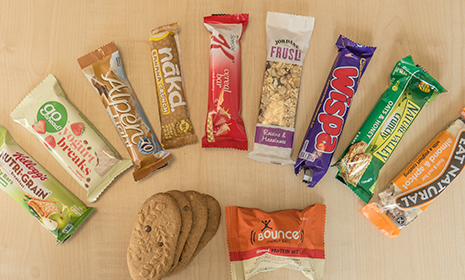
Healthy or unhealthy?
Accidentally skipping breakfast during the morning rush, grabbing a quick snack on the move, adding something extra to your child’s lunchbox – cereal bars can be a reliable go-to on hectic days.
Although often thought of as a healthy snack option, this is not always the case, with many varieties containing surprisingly high amounts of sugar.
With recent targets being slashed, the amount of sugar we’re allowed on a daily basis has also dropped, throwing into question the types of snacks we’re eating and the overall amount of sugar in our diets.
To highlight this, we looked at the sugar content of 10 popular cereal bars commonly found in shops, cafes, our kitchen cupboards and our lunchboxes. Are some brands healthier than others? Just how sugary are these bars? And, most importantly, could some of them be damaging to our health?
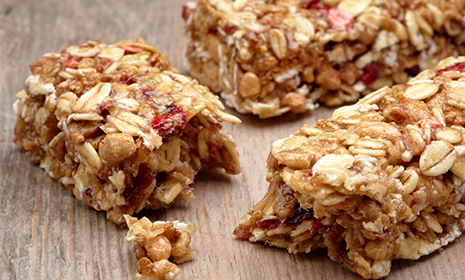
How much sugar is ok?
The maximum daily 'free sugar' intake for:
- children (aged 4 to 7) is 19g, equal to 5 cubes or 5 tsp of sugar
- children aged (7 to 10) is 24g, equal to 6 cubes or 6 tsp of sugar
- children (over 11) and adults is 30g, equal to 7 cubes or 7 tsp of sugar
Different types of sugar
The type of sugar we should all be on the look out for is known asFree sugar is any sugar that’s been added to food or drink products by the manufacturer, cook or consumer – essentially, any sugar that was not already there. It also includes sugars naturally found in honey, syrups and fruit juice. Fruit itself is fine, and the sugar it contains doesn’t count as ‘free sugar’. Ideally, no more than 5% of the energy we consume should come from free sugars. So, how do you know how to spot these pesky free sugars?
Even on close inspection of labels and packaging, it can be tricky to know which of the ingredients are free sugars. Free sugars come in many forms, including:
- Fructose
- Dextrose
- Glucose fructose syrup
- Oligofructose syrup
- Soft brown sugar
- Honey
- Brown rice syrup
- Golden syrup
So, you can see how useful it is to check the ingredient list on food packaging and products.
Carbs and sugar
It's worth remembering that all carbs are broken down into simple sugars. There are two main types of carbs - simple carbs (including fructose, glucose and lactose), and complex carbs (found in foods such as vegetables, grains, rice, breads and cereals). Cereal bars may well contain both types of carbs, and, as we know, carb counting plays an important part in good blood sugar control and effective diabetes management.
Read more about the relationship between carbs and sugar.
Popular cereal bars
Below is the nutritional information for each of the 10 everyday cereal bars.
While some of them do contain sugar from added fruit and fruit juice, you’ll see that almost all of the varieties have added sugar – the free sugar we should all be cutting down on. All amounts shown are in grams (g).
We’ve traffic lighted them so you can see exactly what is in each bar and whether the amount is high (red), medium (amber) or low (green).
*These nutritional values were accurate at the time of publication, but some of these values may have changed. Please check the food labels for the latest nutritional information.
See the images below for a nutritional breakdown of the 10 bars, or scroll further down for the text version.
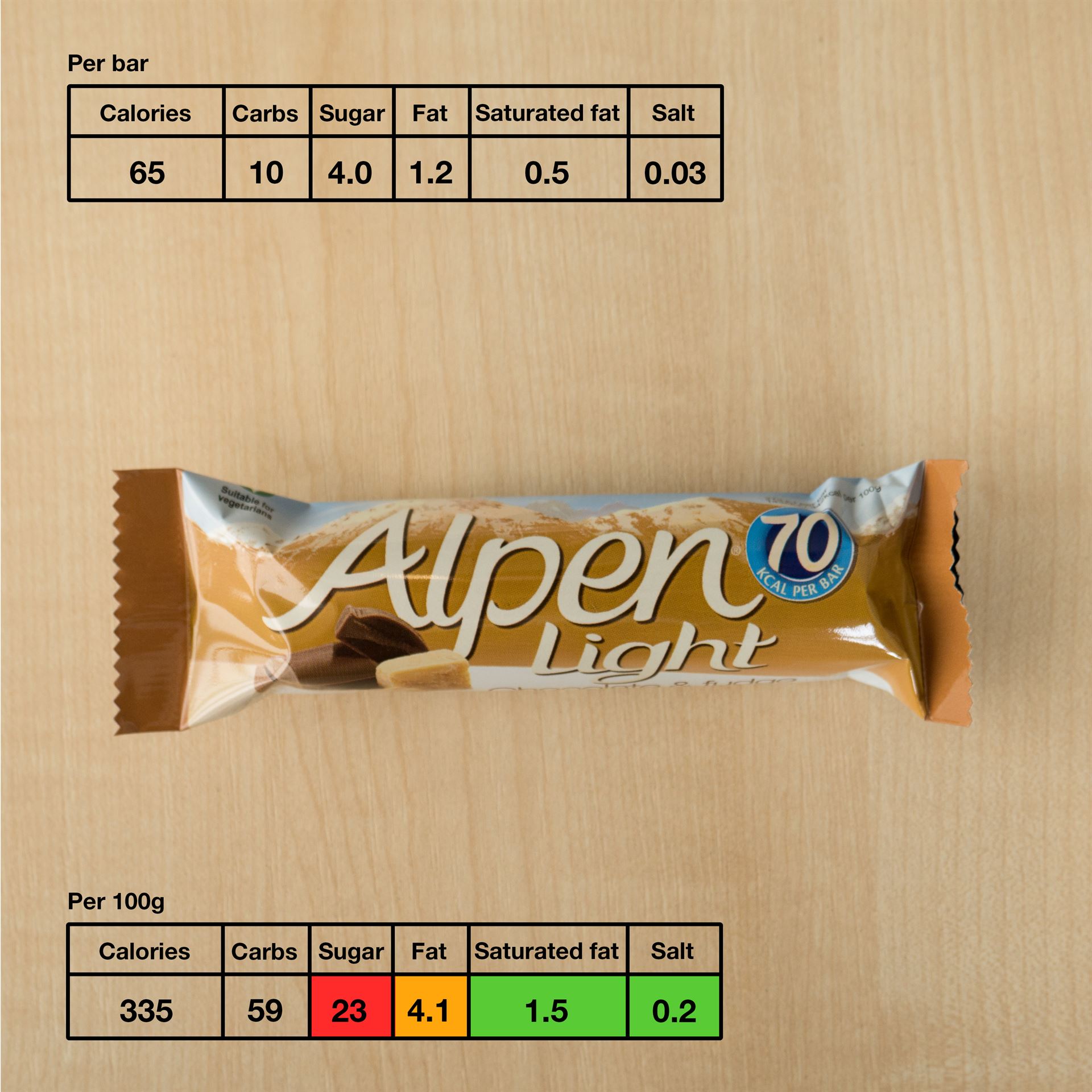
Alpen Light - Chocolate and Fudge (19g)
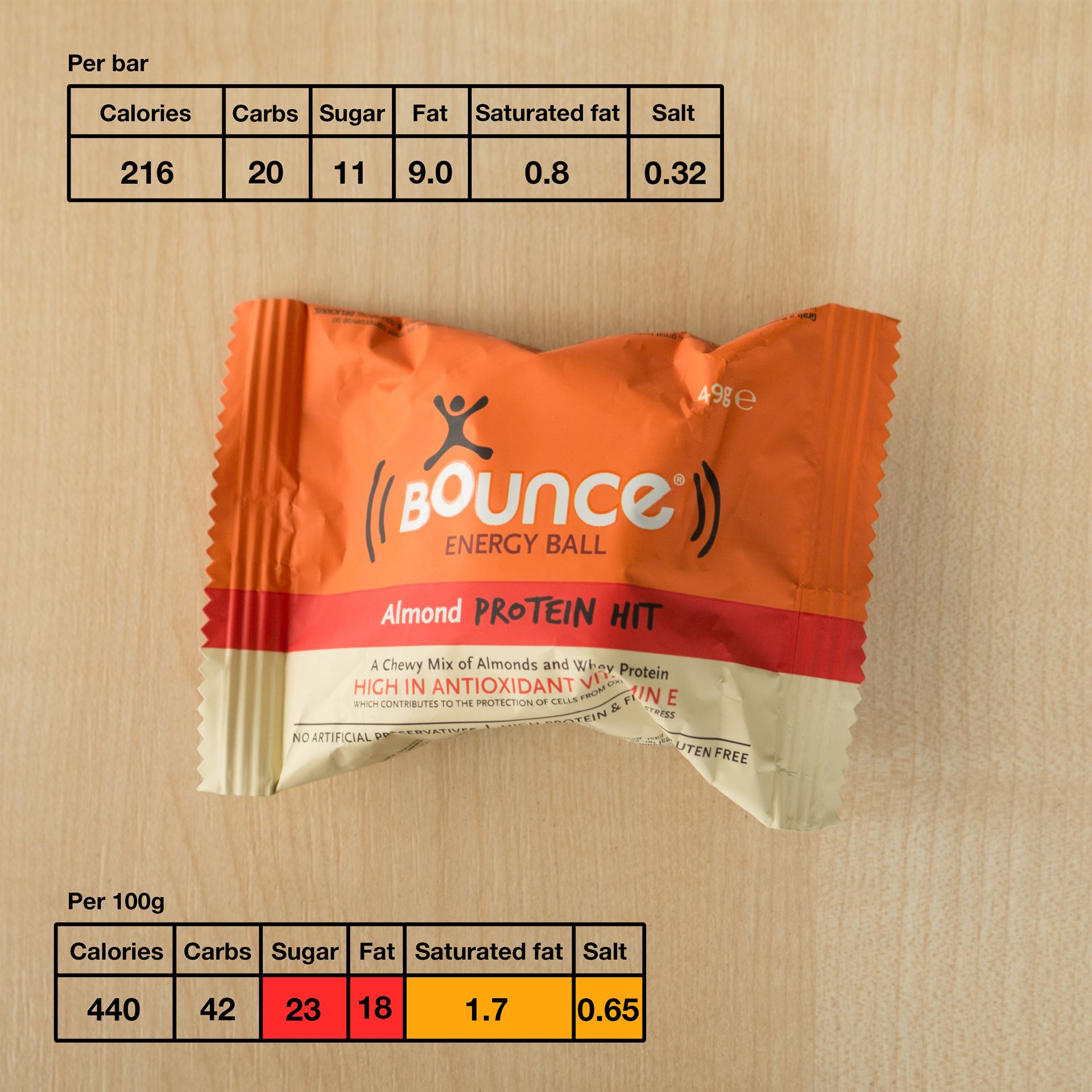
Bounce Energy Ball - Almond Protein Hit (42g)

Go Ahead Yoghurt Breaks - Strawberry (35g)
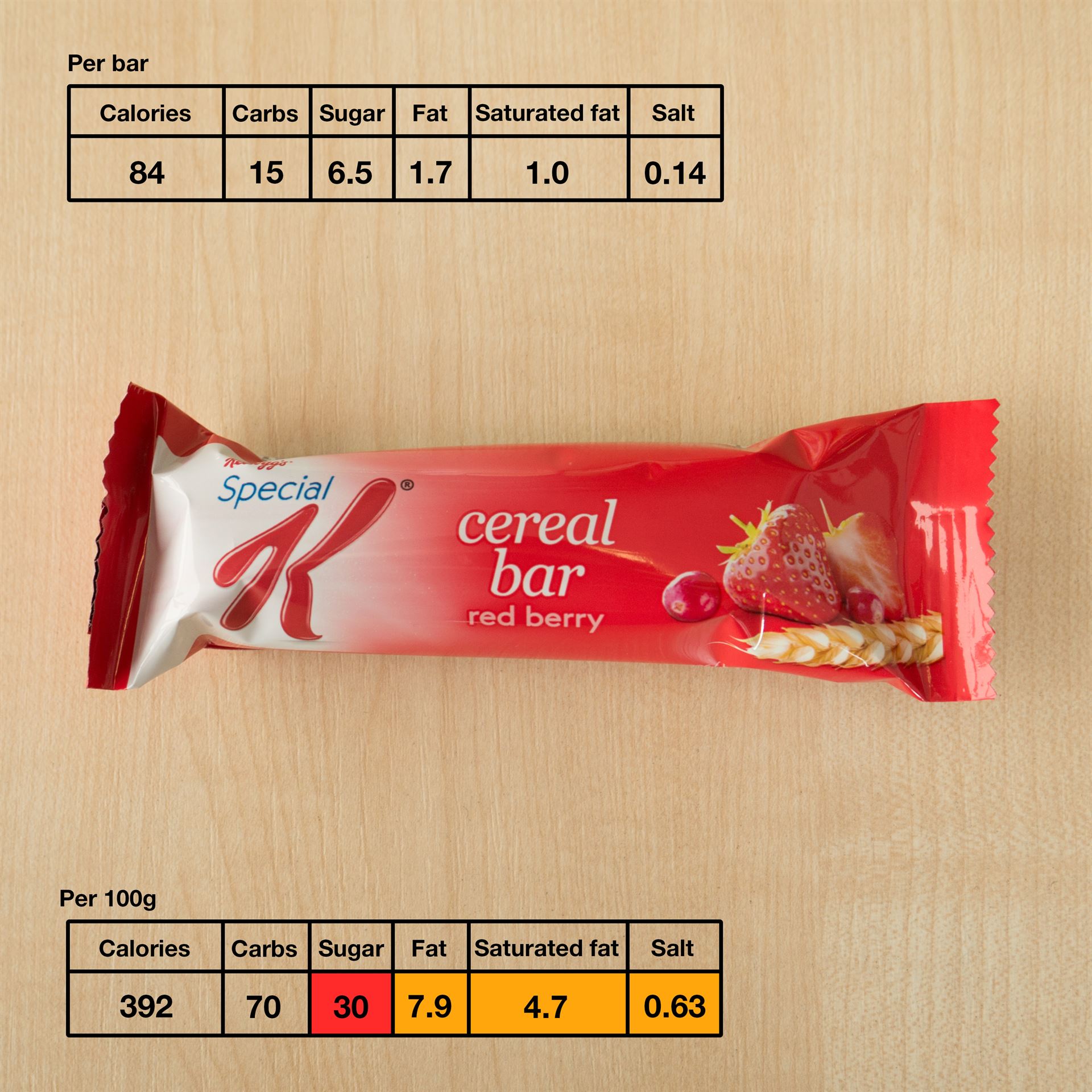
Kellogg's Special K - Red Berry (21.5g)

Nature Valley - Oats and Honey (42g)
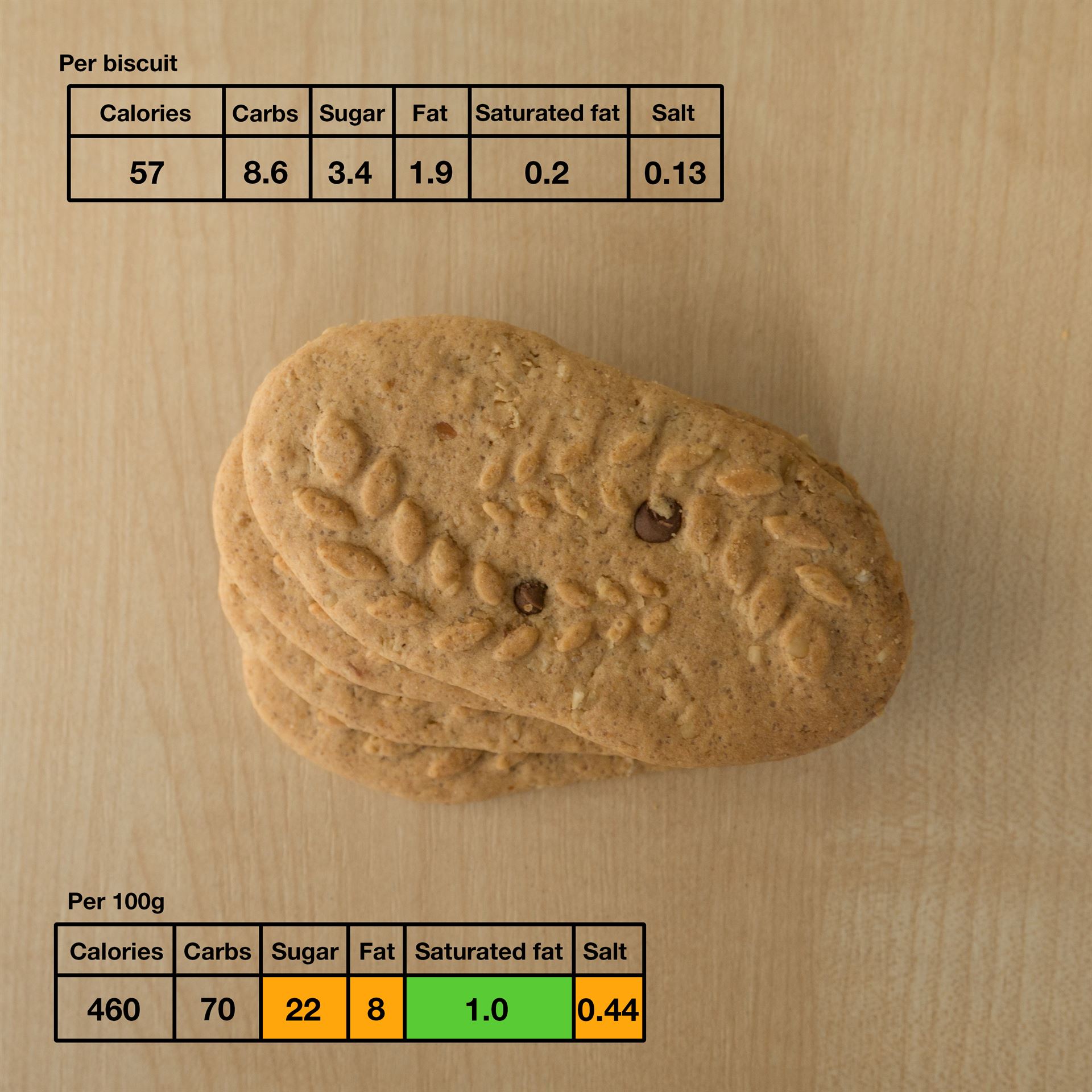
Belvita - Breakfast Biscuits (50g) (info per biscuit)

Eat Natural - Almond and Apricot (50g)
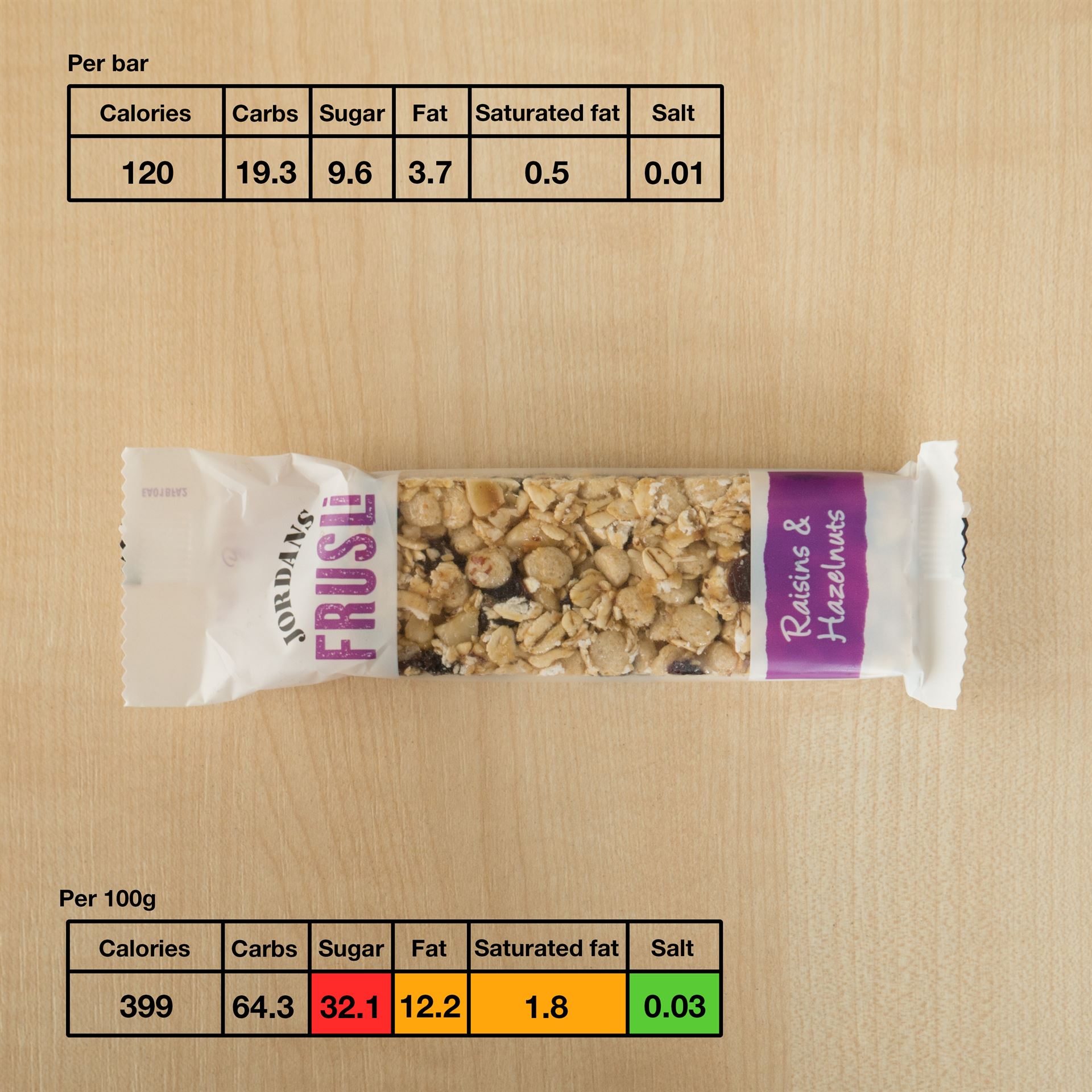
Jordans Frusli - Raisins and Hazelnuts (30g)
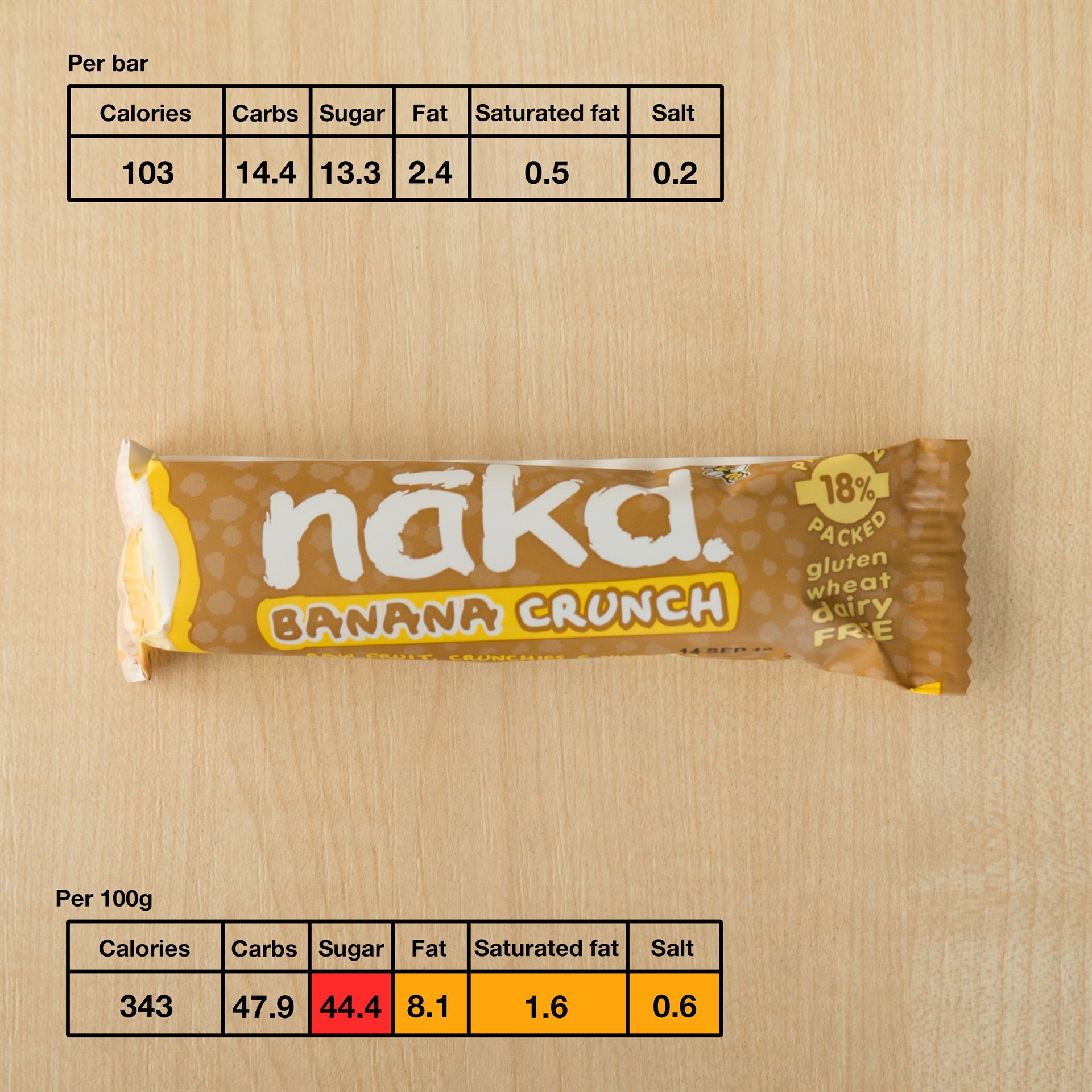
Nakd - Banana Crunch (30g)
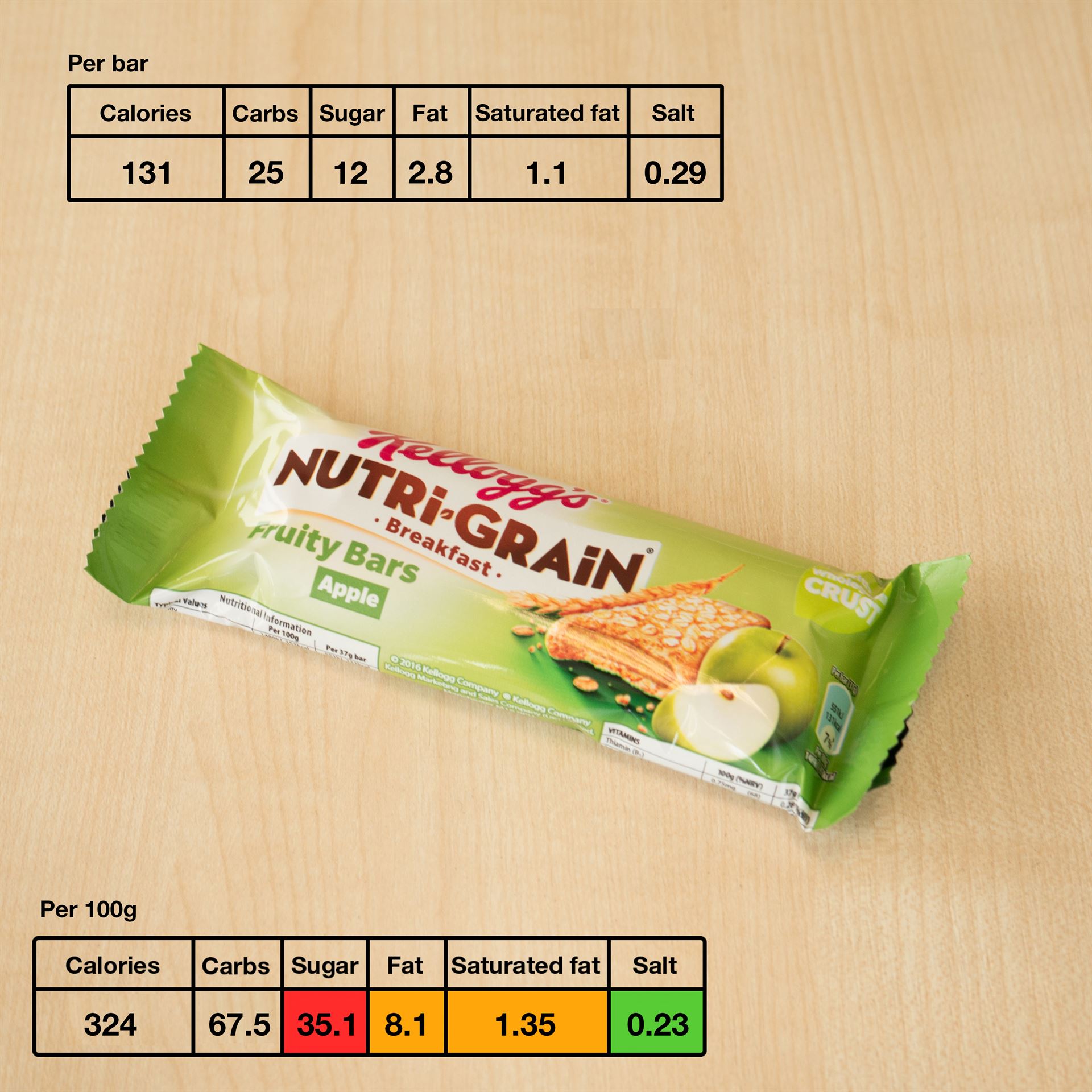
Nutrigrain Fruity Bar - Apple (37g)
As you can see, of the 10 cereal bars, the majority were high in sugar. Worryingly, all of the cereal bars have added sugar, with the exception of the Nakd bar. The 13.3g of sugar in this particular bar consist of naturally-occurring sugars, which come directly from fruit. This is not the type of sugar we need to cut down on. However, when looking at the labels, we found that very few of the other cereal bars had any fruit added at all. If you're unsure whether the sugar content in a bar is from free or naturally-occurring sugars, check the labels for words ending in 'ose' or any type of syrup, as mentioned above.
Although most of the cereal bars were graded amber for total and saturated fat, the Eat Natural bar was graded red - the palm kernel oil and coconut added to this bar raise the saturated fat content. Palm oil is an ingredient added to many of the cereal bars in our selection. Regular readers of Enjoy Food will know that it’s saturated fat that increases ‘bad’ cholesterol in our bodies, which increases your risk of serious health conditions such as heart attack and stroke.
To see how the cereal bars fare in terms of other snacks, our dietitians did the same for a chocolate bar and an apple…
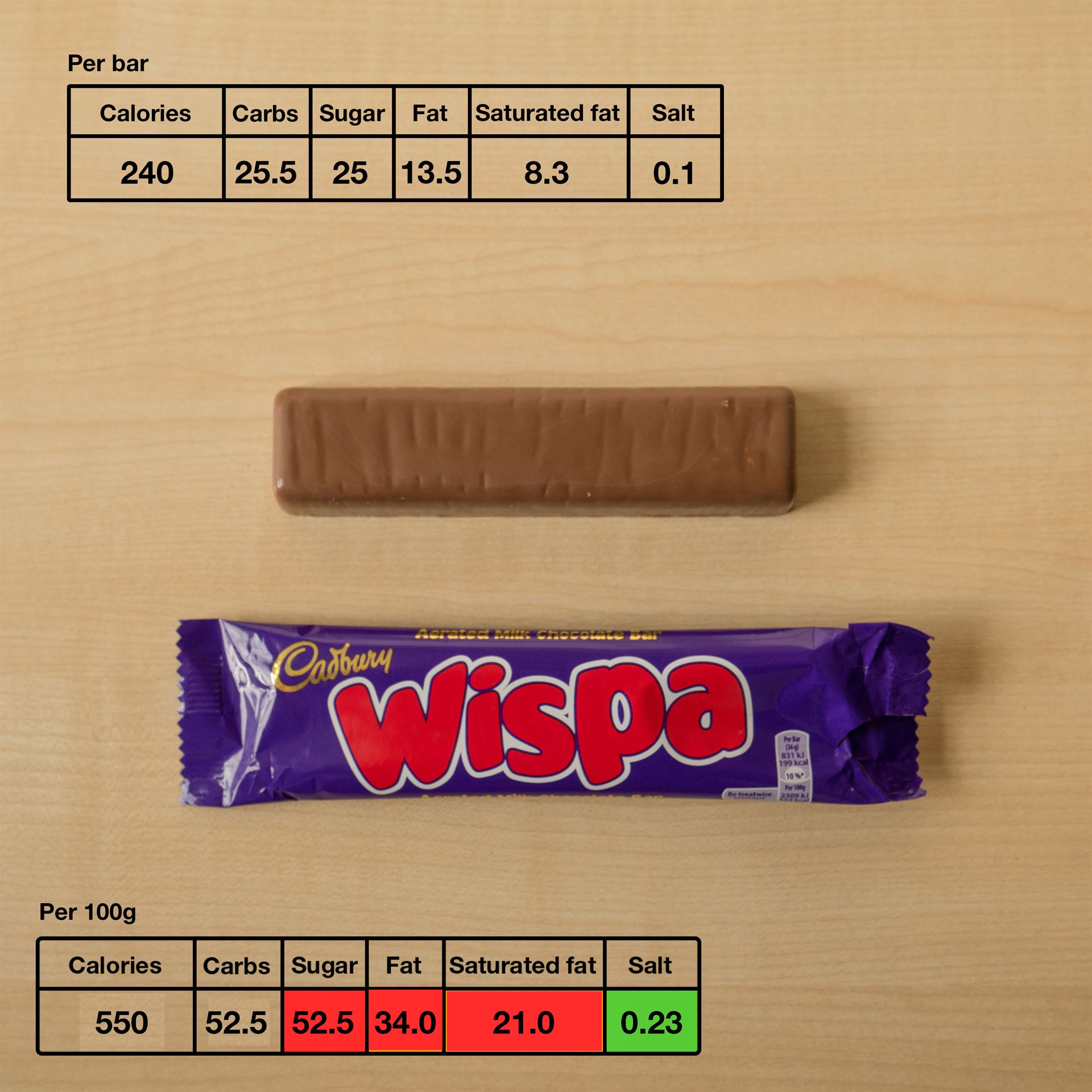
Wispa Chocolate Bar (45g)
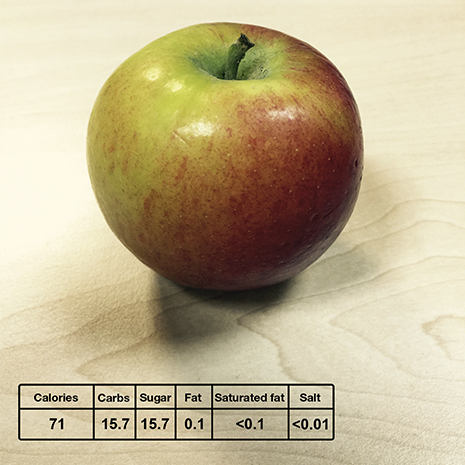
Apple
Are cereal bars serial offenders when it comes to a healthy diet?
Snacks like chocolate are, unsurprisingly, graded red, and most people know to consider them as an occasional treat. The issue is that lots of us don’t realise that some cereal bars can be similarly high in sugar and fat – because we don’t think of them in the same way as chocolate, we may be tempted to reach for them more often than we should.
It’s fine to enjoy cereal bars as part of a healthy, balanced diet. For many of us, they make a simple, carb-containing snack that can easily be thrown into a bag or lunchbox if you’re on the move. However, it pays to check the label of your cereal bar before you tuck in – make sure that you’re aware of what you’re eating and can make a clear, informed choice.
As always, fruit provides a great, cheap, and healthy snack choice. Low in fat and saturated fat, with no added sugar, fruit is the perfect solution to a sugar craving. As the sugar content is from the fruit itself, it doesn’t count as a ‘free sugar’, so you can enjoy the sweetness without worrying about the consequences.
Much more than cereal bars...
Want to find out more about healthy eating and good diabetes management? Sign up to our monthly Enjoy Food e-newsletter to receive delicious recipes, dietary advice and the latest developments in food and health.
